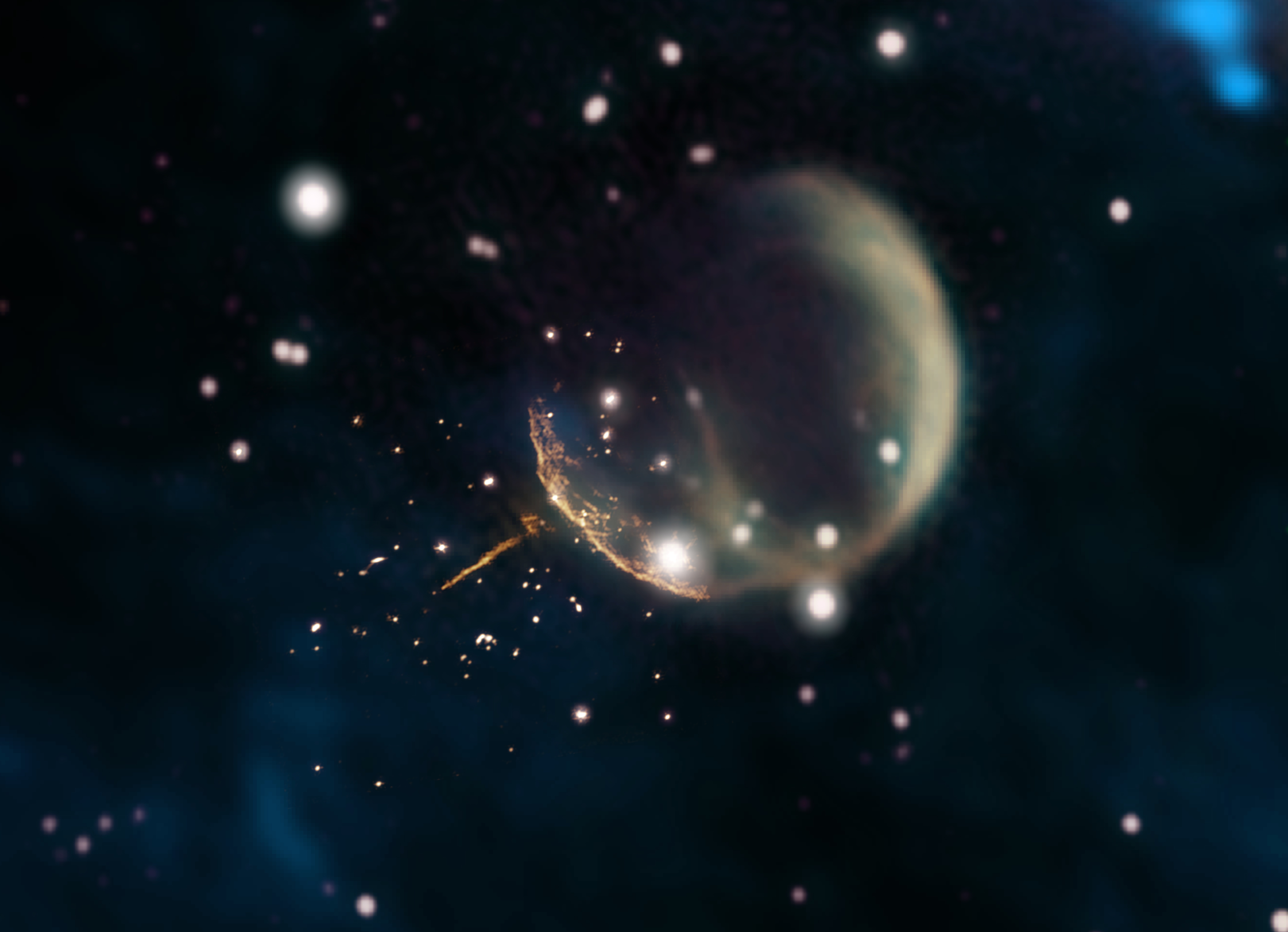Spinning Star Hurtles Through Space at 2.5 Million Mph After Swift Kick from Supernova

Astronomers have clocked a pulsar careening through space at a mind-boggling 2.5 million mph (4 million km/h). It seems to have been kicked to such high speeds by its parent supernova.
Researchers announced the discovery March 19 at the High Energy Astrophysics Division meeting of the American Astronomical Society in Monterey, California. They spotted the pulsar from low Earth orbit with NASA's Fermi Gamma-ray Space Telescope and using the Karl G. Jansky Very Large Array in New Mexico.
"Thanks to its narrow dart-like tail and a fortuitous viewing angle, we can trace this pulsar straight back to its birthplace," Frank Schinzel of the National Radio Astronomy Observatory in New Mexico, said in a statement. [The 12 Strangest Objects in the Universe]
Speedy star
Pulsars are one of the most dramatic phenomena in the universe. They are rapidly spinning neutron stars, which are the cores of collapsed giant stars. As these dense neutron stars spin, they emit beams of electromagnetic radiation that can be detected only when pointed toward Earth. Thus, their signals seem to pulse, giving them their name.
The speedy pulsar was discovered in 2017 using Fermi data and a citizen-science project called Einstein@home, which uses regular computers' idle time to process astrophysical data. After crunching 10 years' worth of numbers, Schinzel and his colleagues calculated the new pulsar's incredible speed and its direction as it moves through space.
The pulsar, dubbed PSR J0002+6216 (or J0002 for short), is 6,500 light-years away from Earth and 53 light-years away from CTB 1, the remnant of a supernova. The pulsar is trailed by a 13-light-year-long tail of magnetic energy and particles, which points right back to CTB 1.
Ancient explosion
About 10,000 years ago, a supernova exploded, leaving behind CTB 1 and shooting J0002 outward. According to the new research, which has been submitted for publication to The Astrophysical Journal Letters, the pulsar is faster than 99 percent of pulsars for which the speed is known, as it's cruising at five times the speed of the average pulsar. It will eventually leave the Milky Way.
Sign up for the Live Science daily newsletter now
Get the world’s most fascinating discoveries delivered straight to your inbox.
The researchers plan to study J0002 to better understand the supernova explosion that sent it flying, drawing in more observations from the National Science Foundation's Very Long Baseline Array and NASA's Chandra X-ray Observatory.
"Further study of this object will help us better understand how these explosions are able to 'kick' neutron stars to such high speed," Schinzel said.
- 11 Fascinating Facts About Our Milky Way Galaxy
- 15 Amazing Images of Stars
- Big Bang to Civilization: 10 Amazing Origin Events
Originally published on Live Science.

Stephanie Pappas is a contributing writer for Live Science, covering topics ranging from geoscience to archaeology to the human brain and behavior. She was previously a senior writer for Live Science but is now a freelancer based in Denver, Colorado, and regularly contributes to Scientific American and The Monitor, the monthly magazine of the American Psychological Association. Stephanie received a bachelor's degree in psychology from the University of South Carolina and a graduate certificate in science communication from the University of California, Santa Cruz.









